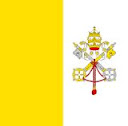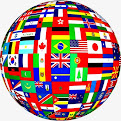A Global Tapestry of Tradition: Eid al-Adha, Internal Autonomy Day, Imnarja, and Feast Days of Saints Peter and Paul on June 29
On June 29, a multitude of countries and communities come together in celebration. From the religious observations of Eid al-Adha to the celebration of autonomy, and the recognition of saints, let's take a journey around the world.
In many Muslim-majority countries, Eid al-Adha, also known as the "Festival of Sacrifice," is observed. It honors the willingness of Ibrahim (Abraham) to sacrifice his son as an act of obedience to God. Feasts, charitable acts, and family gatherings characterize this holiday, with variations of the celebration known as Kurban Bajrami, Tabaski, Aid el-Kebir, and more in different cultures.
June 29 is a significant date for French Polynesia, marking Internal Autonomy Day. This day celebrates the region's unique cultural identity and its autonomy within the French Republic. Festivities include traditional music, dance, and parades.
On the Mediterranean island of Malta, locals celebrate "The Imnarja," one of Malta's oldest traditional festivals. The name Imnarja is derived from luminarja, referring to the illumination of the festivities. Expect folk music, feasting, and age-old traditions.
Peru, Vatican City, and Venezuela honor Saints Peter and Paul, two of Christianity's most revered saints. Masses, processions, and cultural events mark the occasion, celebrating the lives and teachings of these foundational figures.
Science
In 1995, the U.S. Space Shuttle Atlantis docked with the Russian space station Mir, marking a significant milestone in international space cooperation.
Arts
In the world of arts, on June 29, 1974, Isabel Perón assumed the presidency of Argentina, becoming the first woman president in the Western Hemisphere. Her life story continues to inspire artists, writers, and filmmakers worldwide.








Comments
Post a Comment